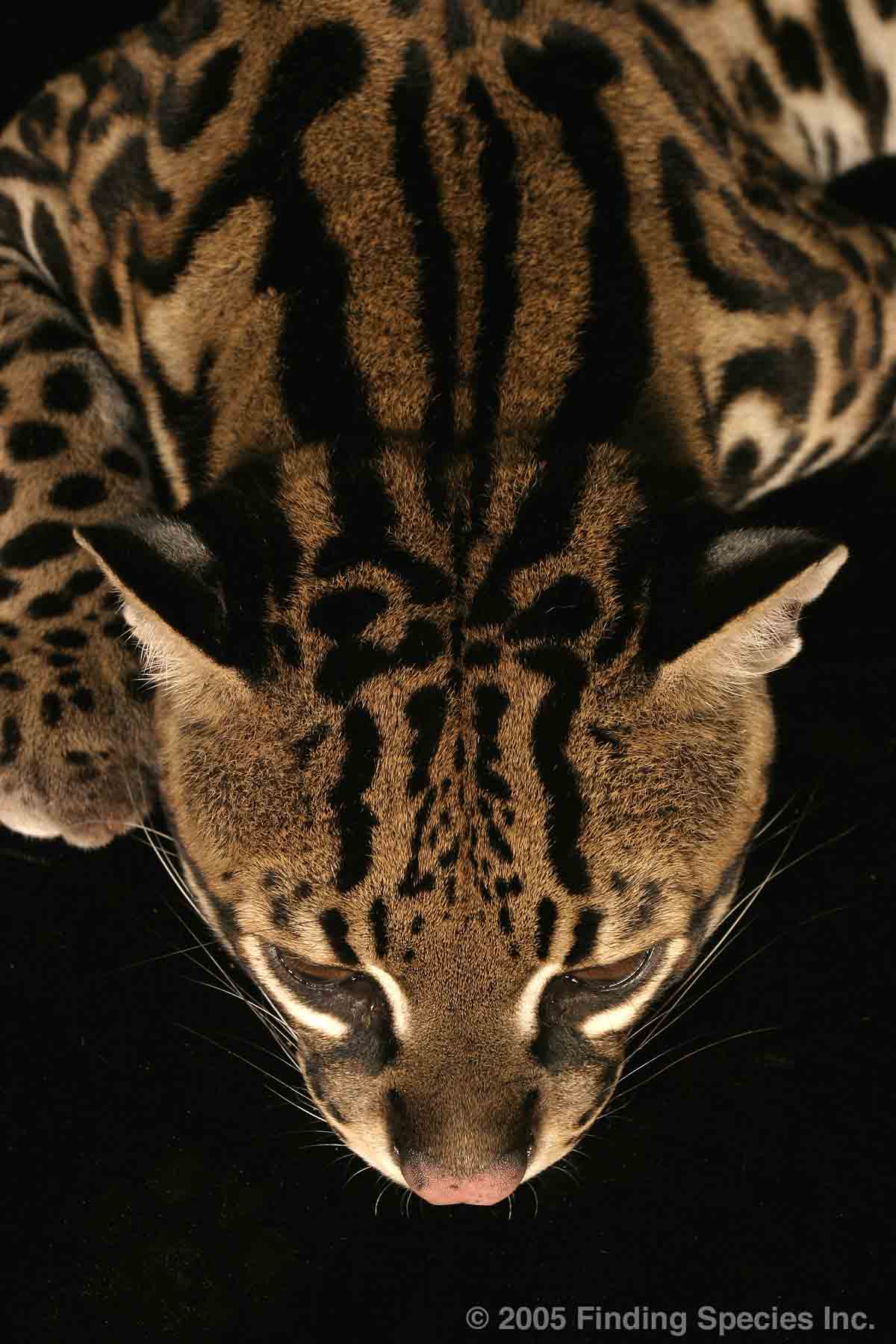Ocelot (Leopardus pardalis) Classification: Class: Mammalia Order: Carnivora Family: Felidae Genus: Leopardus Species: pardalis IUCN Status: Not-Listed
Ocelots have light orange to yellow close-cropped coats that are decorated with dark spots and rosettes running in near-parallel chains down their bodies. They have white undersides. People have prized these coats for their beauty and texture for centuries, which helps to explain the extirpation of the Ocelots from virtually all of the southern United States. Ocelots are small cats, with males weighing about 10.5 kilos (23 lbs) and females about 9 kilos (20 lbs).
These cats have a range that extends from the scrublands and forests of Mexico all the way south to Argentina. Although their range is large and they have been known to occupy a spectrum of different habitats, these habitats must have abundant populations of small rodents and relatively thick ground cover. Ocelots are almost always are in some type of brush. Only on moonless nights or cloudy days are they seen in open areas. This species is strongly nocturnal, and sleeps in trees or dense brush during the day. It is not uncommon for the same sleeping spot to be used by several Ocelots.
Ocelots are usually active for a 12-hour period during which they travel between 1.8 and 7.6 kilometers (1 to 5 miles) searching for food. Their diets are quite varied but consist mostly of small nocturnal rodents like rice rats, cane mice, and armadillos. They have been known to take on larger prey such as deer, anteaters, land tortoises, and squirrel monkeys. During the wet season, they often eat migrating fish and land crabs. Most of the Ocelot's prey is within 1-3% of the cat's body weight. (http://lynx.uio.no/catfolk/ocelot01.htm)
Female Ocelots usually begin mating at about 3 years of age, although they can start as early as 18 months. Mothers will leave the den (which is usually built in thick brush) at night to hunt for food for the kittens (although there is usually only one kitten per litter). Kittens begin hunting when they are about 3 months old, but are not fully independent for about a year. These cats have a life-span of about 10 years. (http://www.kenanderson.net/ocelots/)
The gravest threat to Ocelots over the past century has been hunting. However, hunting this species is now illegal in almost every country. Habitat encroachment is another big concern. Unlike Bobcats, which are of comparable size and have similar eating habits, Ocelots have shown little ability to adapt to human influenced environments. Their slow reproductive rates and short life spans make Ocelots particularly susceptible to hunting and habitat encroachment. (http://lynx.uio.no/catfolk/ocelot01.htm)
CLICK HERE FOR MORE EXTRAORDINARY
ANIMALS and PLANTS OF YASUNÍ,
THE MOST BIODIVERSE FOREST KNOWN ON EARTH
Yasuní Biodiversity Main Page
|

